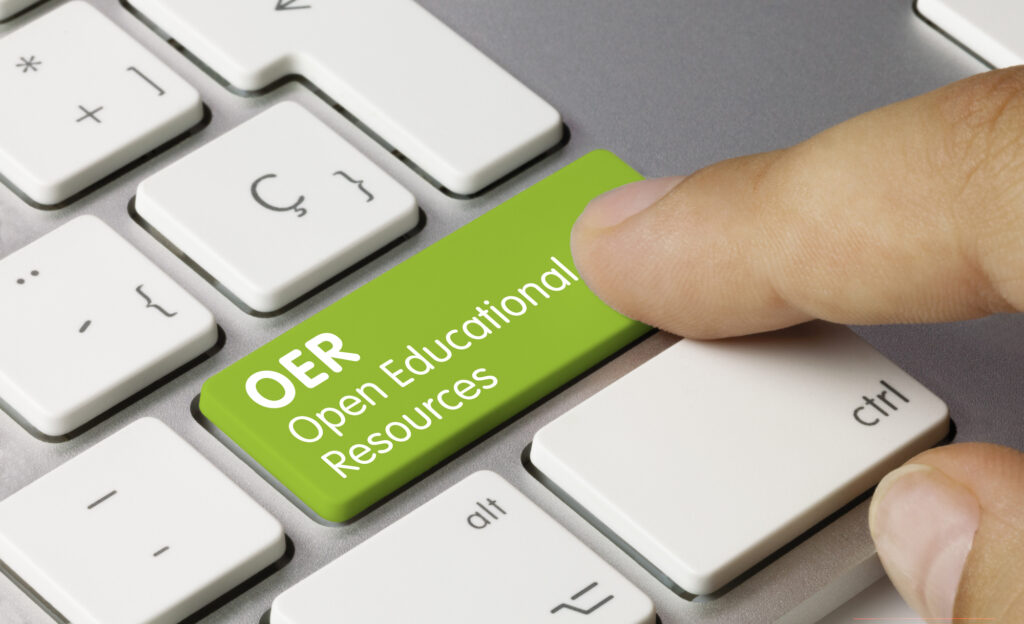
Open Educational Resources, OER for short, have been gaining popularity in the academic community for the last several years due to the benefits they can bring educators and classrooms of all levels, especially underfunded schools and classes. In short: OER are copyright-free educational materials that are entirely free to use and edit—alternatives to traditional (expensive) commercial textbooks, worksheets, and other educational materials.
We’ve assembled this guide for everything you need to know about OER, including the details behind their open licensing and the best ways to find OER materials that work for you.
OER and Open Licenses
Open Educational Resources (OER) are materials for teaching, learning, and research that are fully open for anyone to use, for free! OER materials either 1) reside in the public domain, or 2) are released under an open license that allows them to be used and repurposed by anyone. Such open licenses include any Creative Commons license that grants the public permission to use “5R activities” with the work, which are the different ways it can be used and repurposed. The 5Rs are:
- Retain—permission to make, control, and own a copy of the resource.
- Revise—permission to edit or modify their copy of the resource.
- Remix—permission to combine their copy of the resource (original or modified) with other existing material.
- Reuse—permission to use the resource (the original, a revised version, or a remixed version) publicly, such as in a classroom or on a website.
- Redistribute—permission to share copies of the material (the original or a revised/remixed version) with others.
OER materials are either under a Creative Commons license or in the public domain. Works in the public domain have no exclusive intellectual property rights because their rights have expired or been forfeited (or they were created before the existence of copyright). In most countries, a work enters the public domain 70 years after the death of its author. In the United States, a copyright lasts 95 years—this means that anything published prior to 1927 (as of 2022) has entered the public domain. You are free to use any public domain works as OER material for free, without permission from anyone—though, it is always advisable to provide attribution by citing the source. The most common examples of literature in the public domain used as OER materials are the works of Shakespeare.
Creative Commons (CC) licenses are what grant the public permission to use 5R activities with a particular work that isn’t in the public domain. Anyone, from an individual creator to a large institution, can apply a CC license to their content—in exchange, whoever uses or repurposes the content must give credit to the creator. However, not all CC licenses are the same; in fact, there are six different types of Creative Commons licenses, each with a different set of permissions. The type of Creative Commons license a work has determines to what extent it can be OER material.
- CC BY: This license gives the most permission to the public, allowing for 5R activities through both commercial and personal use, so long as the user gives attribution to the creator (i.e., the creator is credited). This content is OER material.
- CC BY-SA: This license is the same as the one above, with one additional restriction—derivative works can only be shared under the same license. That is, if you make a remix of the original CC BY-SA work, you must license your remix under CC BY-SA before distributing it. This content is OER material.
- CC BY-NC: This license allows the public to retain, revise, and remix the work, so long as they credit the creator and their reuse and redistribution is noncommercial. This content is OER material so long as it is not used for profit.
- CC BY-NC-SA: This license is the same as the one above, with the additional restriction that adaptations of the original work must also be licensed under CC BY-NC-SA. Again, this content is OER material so long as it is not used for profit.
- CC BY-ND: This license allows the public to retain, reuse, and redistribute the material, as well as commercial use, but does NOT allow for any modifications or derivatives from the original. This content doesn’t qualify as OER, but you may use it in an educational setting without revising nor remixing it.
- CC-BY-NC-ND: This license is the same as the one above, except any redistribution of the material may not be for commercial use. This content doesn’t qualify as OER, but you may use it in a noncommercial, educational setting without revising nor remixing it.
One final variety of Creative Commons licenses is the Creative Commons Public Domain Dedication, otherwise known as CC0 (or, CC Zero). This license allows creators to put their work in the public domain and completely give up all copyright. As it is work in the public domain, it qualifies as OER.
When using Creative Commons licensed material as an educational resource, pay special attention to which type of license it has—this may limit what you can do with the material.
Why Use and Teach with OER?
The label of Open Educational Resources encompasses anything that is used in the process of teaching or learning. Textbooks, activities, quizzes, lesson plans, reading passages, or even rubrics are all examples of materials that can be OER, free and open to be reused, edited, and distributed—so long as the user complies with any license terms (such as attribution or re-licensing). Utilizing OER can be a game-changer for educators and classrooms; copyright-free, open-use materials are adaptable, efficient to use, high-quality, and free!
“Fair Use” of Copyrighted Material isn’t Enough
The fair use doctrine allows for portions of copyrighted work to be used without permission, so long as it is used for a particular purpose: commentary, criticism, or parody. Furthermore, in material used for commentary or criticism, the size of the copied portion should not be excessive—quoting a few sentences from a book in order to convey a greater idea would be generally excused as fair use, while quoting paragraphs or chapters would be considered plagiarism. If these conditions are met, any copyrighted work can technically become OER material. Quoting copyrighted material in order to convey a particular idea is fair use, as is taking ideas from a copyrighted work in order to parody it.
However, the limitations that come with fair use are steep, hindering educators’ ability to teach effectively using the material. Copyrighted material comes with a cost, and the size of any copied portion cannot be excessive. Many classrooms cannot afford the cost of commercial books, and students can’t always get the full picture from just a snapshot of copyrighted material. Searching for and utilizing Open Educational Resources in particular, such as works in the public domain or CC-licensed works, ameliorates this issue by becoming a no-cost substitute for the copyrighted material and allowing classrooms to get the full picture without restriction.
Ready-To-Adopt Content Fits into Any Classroom
No two classrooms are the same. As such, the teaching and learning materials used in a classroom are specially selected or created to fit the needs of the educator and the students. This is one of the most valuable benefits of OER—because open educational resources are either in the public domain or Creative Commons licensed, anyone is free to revise and remix their copy of the materials.
Educators can adapt their OER into their existing classroom or curriculum, customizing it to fit their particular needs. They could remove sections of an open textbook that are outside of the scope of their class, combine several OER quizzes to create a cumulative exam, or even use an open lesson plan when short on time, refining it for their class. Open Educational Resources allow the public to perform 5R activities with the work, so any such open materials can be edited to be a perfect fit for any class. Plus, OER are most often available online, so virtual, hybrid, and in-person classrooms all have access to these free materials.
High Quality Without a Price Barrier
OER are key in providing quality education for every student. Low-income students and schools often lack access to quality, affordable learning materials. Commercial teaching and learning materials, especially textbooks, can quickly become outdated in both content and physical quality, and resupplying them is expensive. OER remove price barriers, allowing students from all socioeconomic backgrounds and schools in all areas of the country to have access to high-quality materials.
When using Open Educational Resources, you don’t have to sacrifice quality for affordability. OER materials, especially when sourced from educational institutions and universities, are typically reliable and high-quality. In fact, several studies of higher-education students have shown that 1) students using OER perform just as well or better in their studies than students using traditional, commercial materials in their courses, and 2) the vast majority of students perceive the quality of their open materials to be comparable or superior to their commercial counterparts. In K–12 environments, teachers overwhelmingly prefer OER over commercial resources across a variety of qualifiers, including accuracy, formatting, reliability, and media inclusion.
Finding and Using OER Textbooks, Lessons, and More
When looking for OER textbooks, lesson plans, or assignments, ensure that you’re looking for something that’s a good fit for your classroom and curriculum. You can search for materials based on your course’s subject or even the unit you’re covering. Further, keep in mind: if you don’t find something that matches the grade level you’re instructing, remember that OER are editable and you can pull content from a different grade level’s open materials that is suitable for the needs of your class.
General OER Libraries
We recommend the following reliable sources to search for OER materials of any subject and any grade, K-12 and college-level.
1. OER Commons
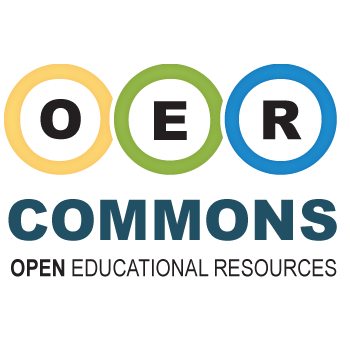 OER Commons is an online OER library created by ISKME (the Institute for the Study of Knowledge Management in Education, a global nonprofit) that has a collection of more than 50,000 materials for K-12 classes and university-level courses. This library emphasizes the collaborative aspect of OER through their virtual OER Commons Hubs, in which a network of users are able to share collections of OER material, perfect for K-12 departments or study groups.
OER Commons is an online OER library created by ISKME (the Institute for the Study of Knowledge Management in Education, a global nonprofit) that has a collection of more than 50,000 materials for K-12 classes and university-level courses. This library emphasizes the collaborative aspect of OER through their virtual OER Commons Hubs, in which a network of users are able to share collections of OER material, perfect for K-12 departments or study groups.
OER Commons also offers microsites for educators and OER training programs in addition to their vast library of open textbooks, interactive lessons and simulations, K-12 activities, and even 5R adaptations of OER.
2. MERLOT
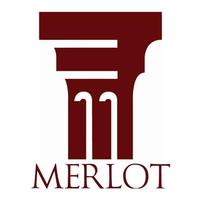 MERLOT is an online repository of OER, created by the California State University and developed in collaboration with several other educational institutions, including the University of North Carolina system. All materials in MERLOT are assessed to ensure that they’re suitable for the collection, and many undergo an additional “peer review” by MERLOT staff.
MERLOT is an online repository of OER, created by the California State University and developed in collaboration with several other educational institutions, including the University of North Carolina system. All materials in MERLOT are assessed to ensure that they’re suitable for the collection, and many undergo an additional “peer review” by MERLOT staff.
MERLOT houses more than 100,000 materials of more than 20 types, including assignments, entire online courses, quizzes, and, naturally, textbooks. Their materials include open educational content for K-12 and college level classes, so there truly is something for every student or educator in their collection.
Open K-12 Curricula
The following sources are K-12 focused collections of open Math and/or English Language Arts curricula.
1. OpenStax
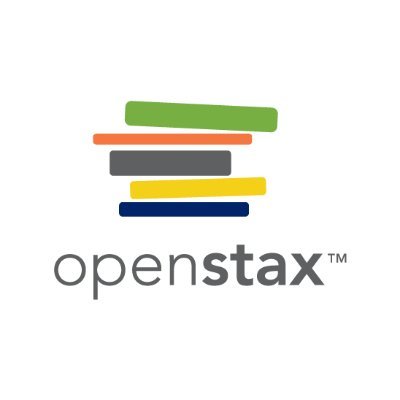 OpenStax is an online OER library part of Rice University, which is being integrated directly into Piqosity. What makes OpenStax unique is that they directly publish high quality textbooks on their site that are peer-reviewed, all in a streamlined format. Regardless of the subject or grade level, the open textbooks are published in full online, also available as PDFs (or you can order a print copy from them).
OpenStax is an online OER library part of Rice University, which is being integrated directly into Piqosity. What makes OpenStax unique is that they directly publish high quality textbooks on their site that are peer-reviewed, all in a streamlined format. Regardless of the subject or grade level, the open textbooks are published in full online, also available as PDFs (or you can order a print copy from them).
They house several textbooks suitable for high school courses, including AP Course textbooks (such as AP Biology or AP Physics) as well as upper-level math textbooks (such as Pre Algebra, Algebra, and Calculus) in addition to their larger collection of college-level textbooks.
2. CK-12
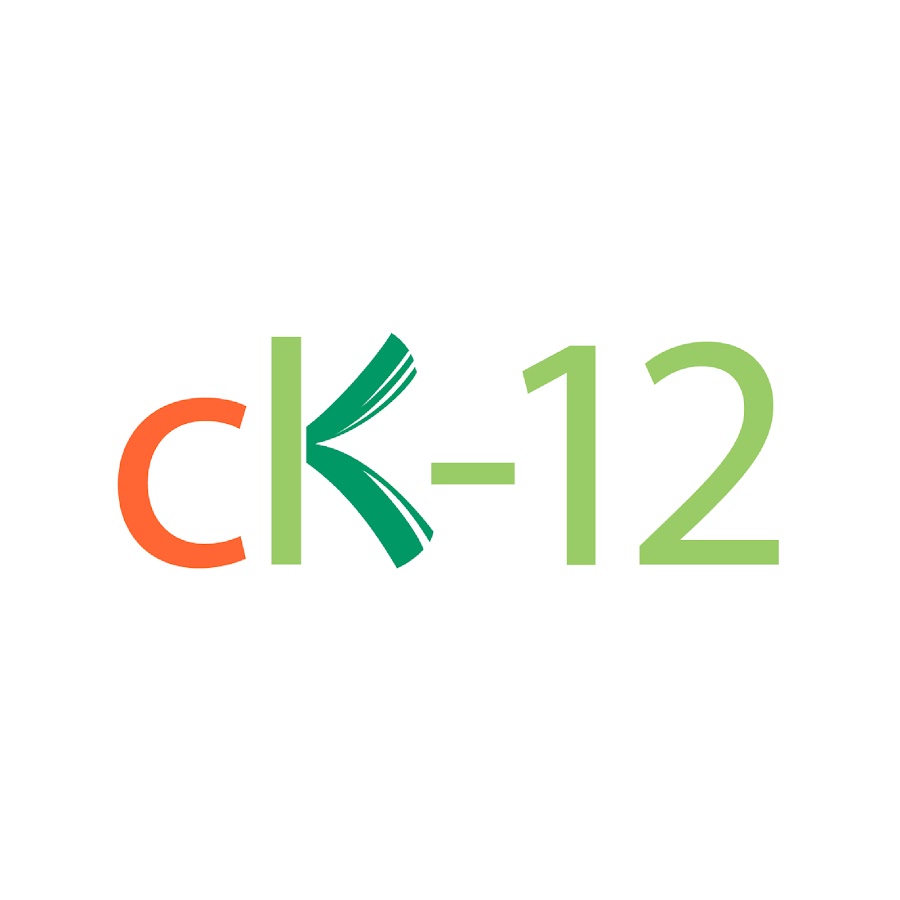 CK-12 offers open lessons for K-12 students, including (but not limited to) Elementary through High School Science, Social Studies, and Math courses. With both conventional lessons and interactive ones, teachers can utilize the free content directly on their website or pull lessons from the site to customize them for their particular class. Further, CK-12 has translations of their content in 6 additional languages!
CK-12 offers open lessons for K-12 students, including (but not limited to) Elementary through High School Science, Social Studies, and Math courses. With both conventional lessons and interactive ones, teachers can utilize the free content directly on their website or pull lessons from the site to customize them for their particular class. Further, CK-12 has translations of their content in 6 additional languages!
3. EngageNY
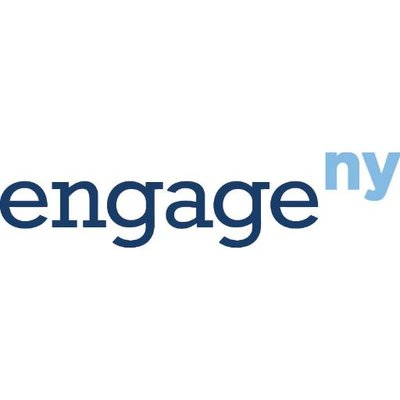 Spearheaded by the New York State Education Department, EngageNY has a full collection of K-12 ELA and Math curriculum modules available for the public to use and modify under a CC BY-NC-SA license. Though the NYSED is no longer supporting EngageNY as a separate site, the entirety of the website’s curricula for both Mathematics and English Language Arts are available for free download in Microsoft Sharepoint for educators to edit, share, and use in their classes.
Spearheaded by the New York State Education Department, EngageNY has a full collection of K-12 ELA and Math curriculum modules available for the public to use and modify under a CC BY-NC-SA license. Though the NYSED is no longer supporting EngageNY as a separate site, the entirety of the website’s curricula for both Mathematics and English Language Arts are available for free download in Microsoft Sharepoint for educators to edit, share, and use in their classes.
4. Illustrative Mathematics
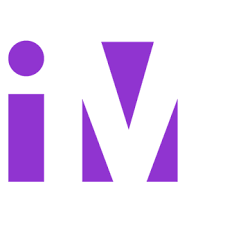 Illustrative Mathematics (IM), founded at the University of Arizona, features full math curricula for Elementary, Middle, and High School math courses. Each IM open curriculum, licensed under CC BY, features full-length lessons, teacher preparation guides, and practice problems for students. IM partners with several curriculum agencies and institutions to provide their material to schools nationwide, and each curriculum is aligned with college-readiness standards.
Illustrative Mathematics (IM), founded at the University of Arizona, features full math curricula for Elementary, Middle, and High School math courses. Each IM open curriculum, licensed under CC BY, features full-length lessons, teacher preparation guides, and practice problems for students. IM partners with several curriculum agencies and institutions to provide their material to schools nationwide, and each curriculum is aligned with college-readiness standards.
5. The Utah Middle School Math Project
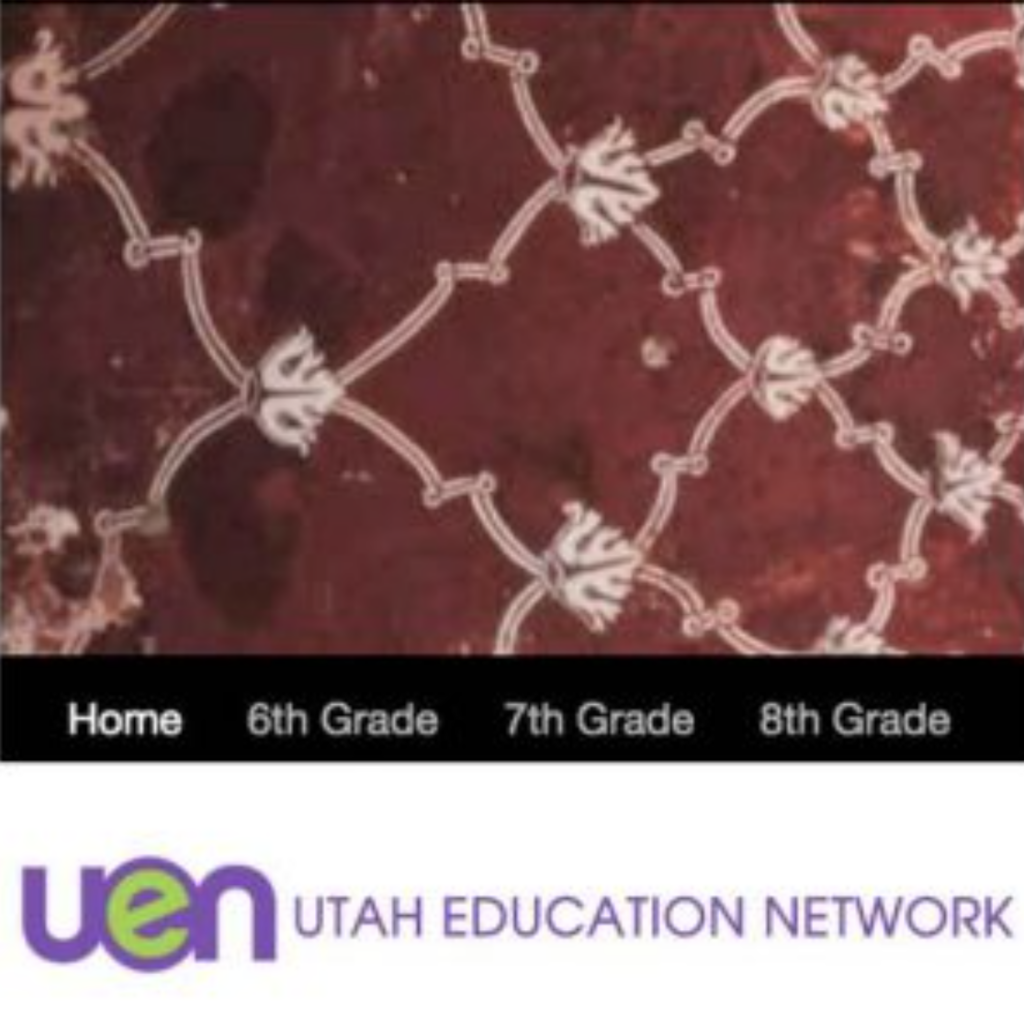 Partnered with the University of Utah, the Utah Middle School Math Project is just that—a simple, easy to use site featuring open middle school math materials, including full textbooks and workbooks for 6th, 7th, and 8th grade. Each textbook, workbook, and corresponding teacher workbook is provided in a PDF version under CC BY, available for the public to download, edit, and redistribute.
Partnered with the University of Utah, the Utah Middle School Math Project is just that—a simple, easy to use site featuring open middle school math materials, including full textbooks and workbooks for 6th, 7th, and 8th grade. Each textbook, workbook, and corresponding teacher workbook is provided in a PDF version under CC BY, available for the public to download, edit, and redistribute.
6. Saylor Academy
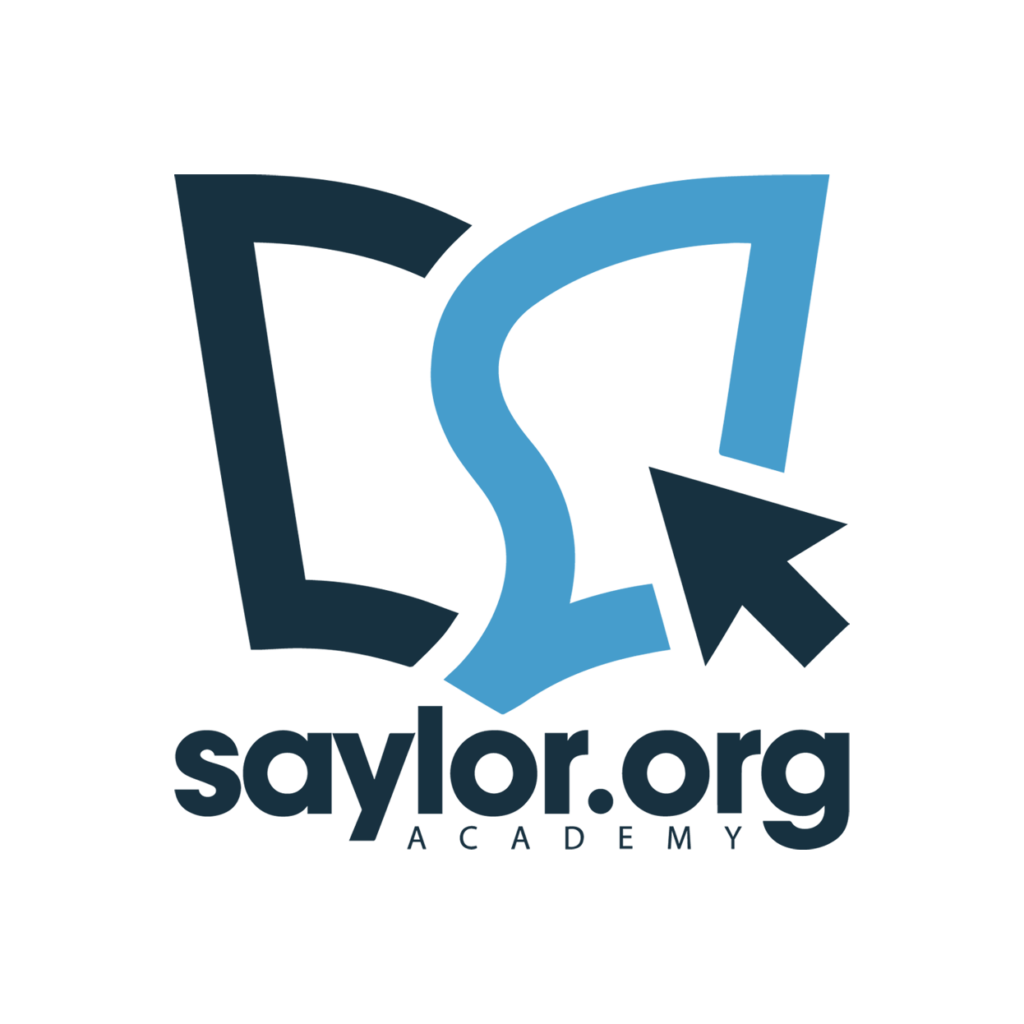 A nonprofit working to offer free, open online courses to the public, Saylor Academy offers almost 100 full-length courses. Their college-level materials are used by institutions across the country, and they can be perfectly tailored to high school math, science, and ELA courses, and each comes with video or written lessons and practice questions to check your students’ understanding.
A nonprofit working to offer free, open online courses to the public, Saylor Academy offers almost 100 full-length courses. Their college-level materials are used by institutions across the country, and they can be perfectly tailored to high school math, science, and ELA courses, and each comes with video or written lessons and practice questions to check your students’ understanding.
The Future of Education
Open Educational Resources are part of a global movement to bring high-quality education to everyone, regardless of their background or economic status. The move from commercial to OER materials emphasizes the collaborative aspect of education—teachers can edit, remix, and otherwise enhance OER based on their expertise and the needs of their students before sharing them with their fellow educators.
Piqosity’s mission is to democratize education and personalize student learning, so we’ve partnered with Rice’s OpenStax in order to showcase their refined collection of OER in several of our K-12 math courses, further populating the educational material students are able to learn from on our platform. In addition to our full test prep courses for the ACT, SAT, and all ISEE levels, we offer full English and Math courses for grades 5-11 online through our app, which can be purchased separately or received for free when bundled with our ISEE test prep courses.
Full-Length Math Courses:
- 5th Grade Math Course
- 6th Grade Math Course
- Pre-Algebra Course
- Algebra I Course
- Geometry Course (New!)
- Algebra II Course
Full-Length ELA Courses:
- 5th Grade English Course
- 6th Grade English Course
- 7th Grade English Course
- 8th Grade English Course
- 9th Grade English Course (New!)
- 11th Grade English Course
More Educational Resources by Piqosity:


